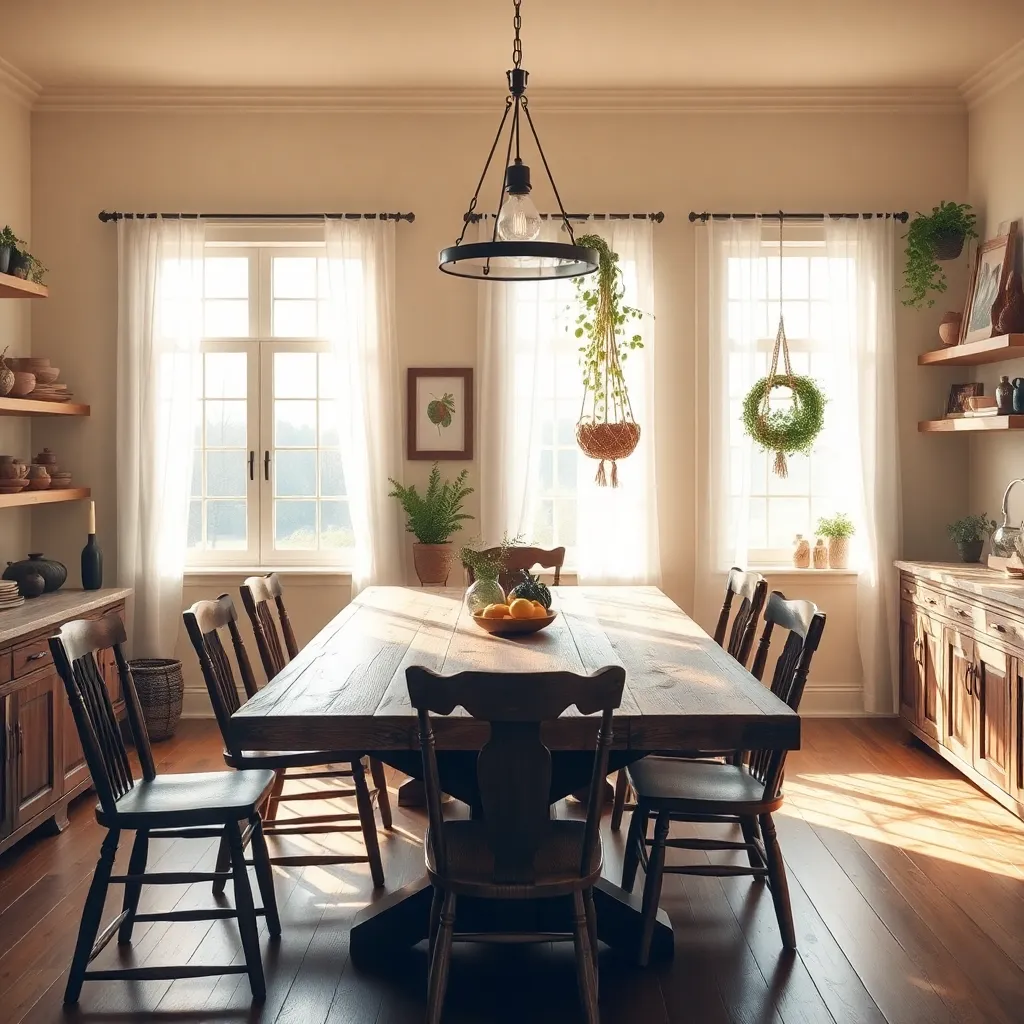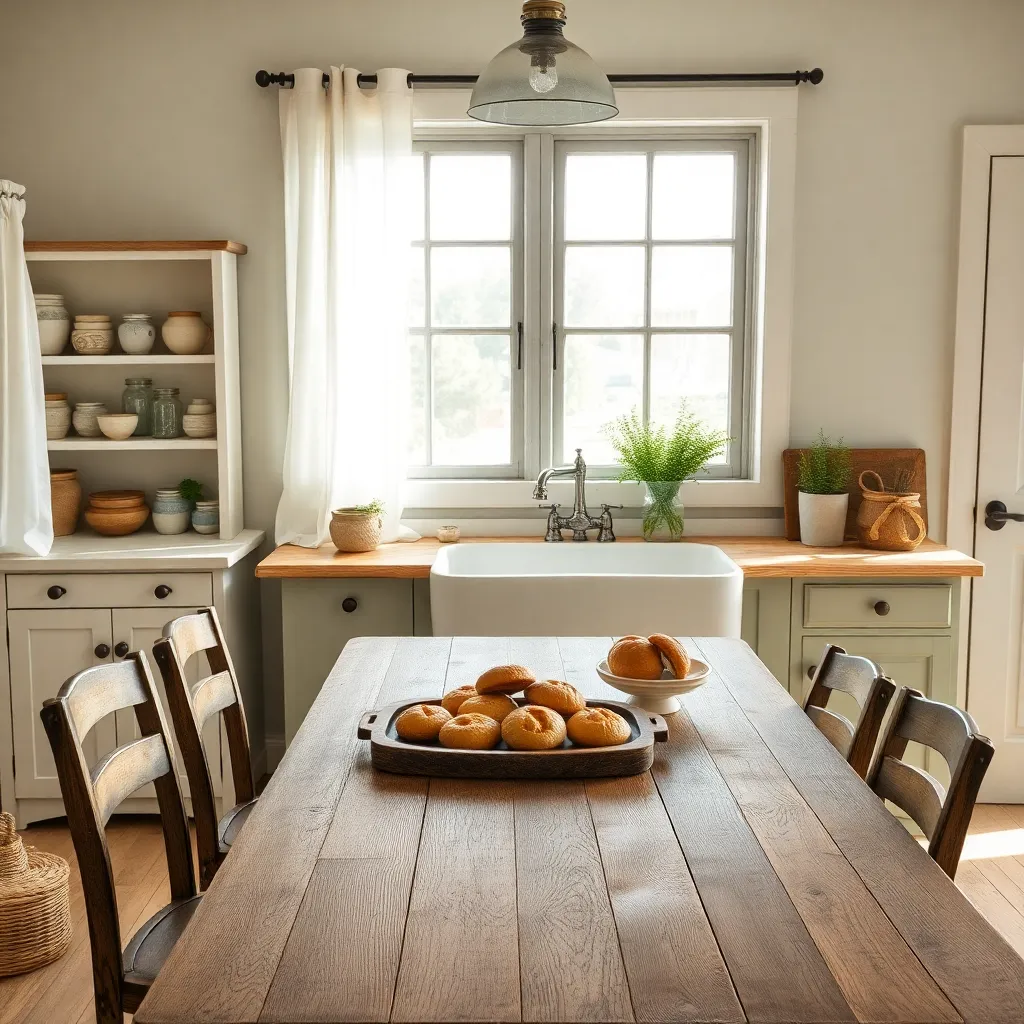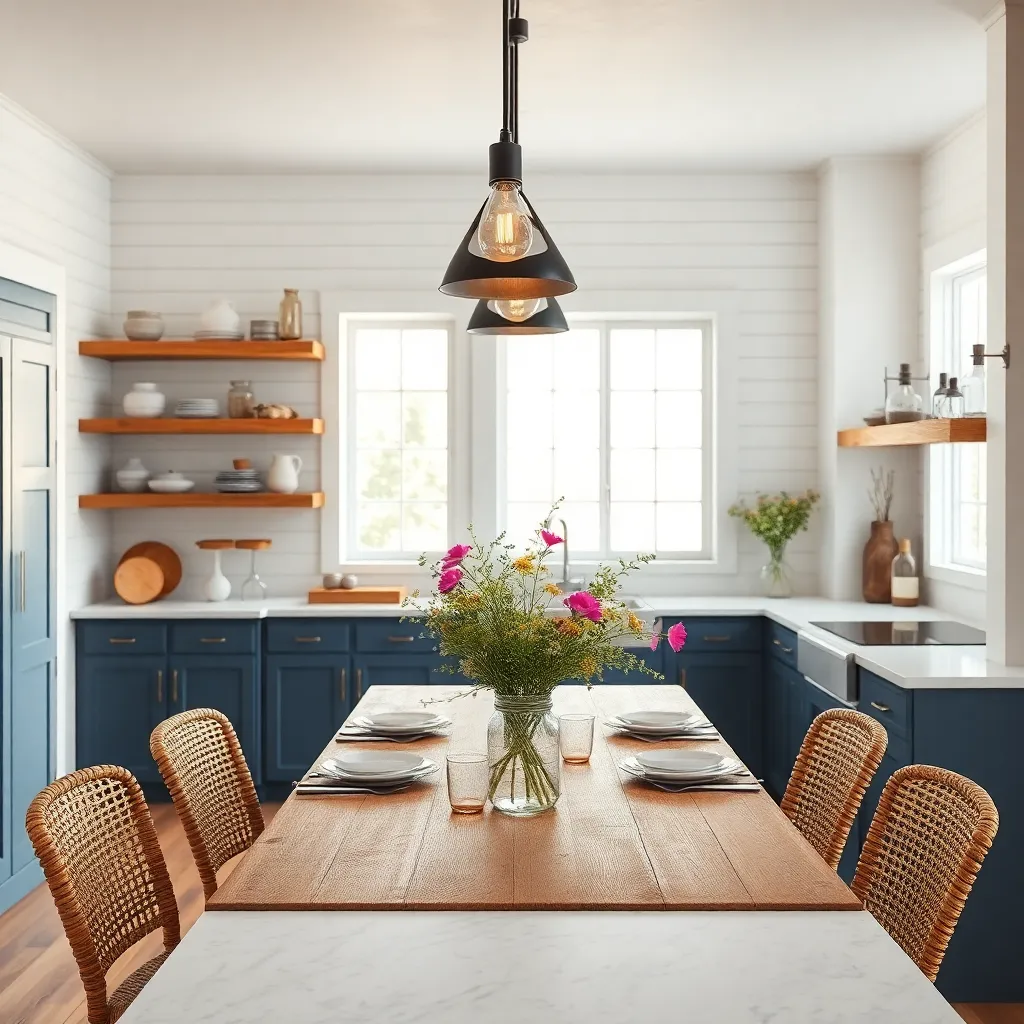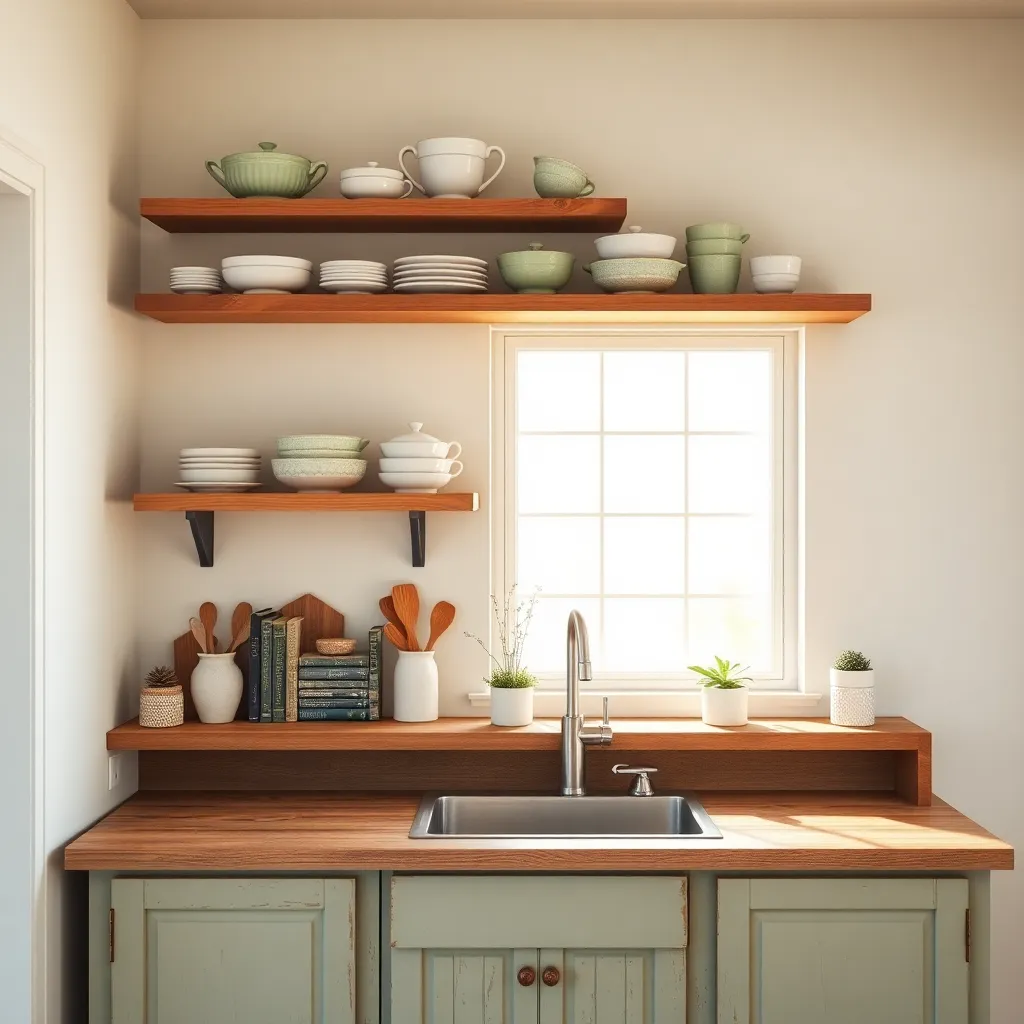The kitchen is often hailed as the heart of the home, and when it comes to creating a space that exudes warmth and charm, few styles capture the essence quite like a farmhouse kitchen. This rustic yet sophisticated aesthetic invites everyone, whether you’re taking your first steps into home decor or are a seasoned design enthusiast, to embrace a blend of comfort and elegance that feels effortlessly timeless.
In the world of interior design, the farmhouse style stands out for its ability to seamlessly marry old-world charm with modern functionality. As you delve into this article, you’ll discover how to incorporate elements such as reclaimed wood, vintage accents, and classic color palettes to transform your kitchen into a welcoming retreat.
Whether your goal is a complete kitchen overhaul or a few thoughtful updates, understanding the key components of farmhouse design will empower you to create a space that’s both beautiful and functional. With practical tips and inspiring ideas ahead, you’ll be equipped to infuse your kitchen with a touch of countryside charm, making it a place where memories are made and shared.
Choosing Rustic Wood Finishes

When choosing rustic wood finishes for a farmhouse kitchen, consider the type of wood that will complement your space. Opt for woods like reclaimed oak or pine, known for their durability and naturally weathered appearance, to achieve an authentic rustic look.
For a cozy atmosphere, select wood finishes that have warm, earthy tones such as honey or chestnut. These colors not only enhance the natural grain of the wood but also pair beautifully with traditional farmhouse color palettes like cream, sage, and muted blues.
Experiment with different finishes to add texture and depth to your kitchen. A matte finish can give your cabinets and countertops a more natural and understated look, while a distressed finish can add character and a sense of history to newer pieces.
Placement is key in showcasing your rustic wood pieces effectively. Consider a central focus point like a large farmhouse table or an island with a butcher block top to anchor the room and draw attention to the wood’s natural beauty.
Incorporating Vintage Farmhouse Accents

To incorporate vintage farmhouse accents into your kitchen, start by selecting timeless pieces like an antique wood table or a vintage-inspired island. Opt for materials like reclaimed wood or wrought iron to enhance the rustic charm and add character to your space.
Consider adding open shelving made of distressed wood to display your collection of vintage dishes and glassware. This not only provides a practical storage solution but also creates an opportunity to showcase beautiful pieces that add warmth and personality to the kitchen.
For a touch of color, integrate vintage enamelware or retro kitchen gadgets in muted tones like cream, soft blue, or pale green. These small accents can be strategically placed on countertops or shelves to create visual interest and a cohesive look.
Lighting plays a crucial role in vintage farmhouse design, so consider installing a statement piece like a wrought iron chandelier or pendant lights with Edison bulbs. These elements provide both functional lighting and a nod to the farmhouse aesthetic, tying the room together beautifully.
Designing a Cozy Cooking Space

Creating a cozy cooking space in a farmhouse kitchen begins with choosing the right color palette. Opt for warm neutrals like cream, taupe, or soft grays, which can be accented with deep greens or blues to create a serene and inviting environment.
When selecting furniture, consider pieces that blend functionality with rustic charm. A large wooden farmhouse table can serve as both a preparation area and a communal spot for family gatherings, while open shelving made of reclaimed wood can add character and practicality.
Lighting plays a crucial role in enhancing coziness, so aim for a mix of ambient and task lighting. Pendant lights with a weathered finish above the island or work areas can add a vintage touch, while under-cabinet lighting ensures that your workspace is well-lit and inviting.
Incorporate textiles to add warmth and texture to the space. Use woven rugs in front of the sink or stove, and hang soft, patterned curtains to bring a touch of softness to the room, ensuring they complement the overall color scheme.
Integrating Modern Farmhouse Lighting

Modern farmhouse lighting is a blend of contemporary aesthetics with rustic charm, making it perfect for creating a warm and inviting kitchen atmosphere. Start by selecting fixtures that incorporate natural materials like wood or wrought iron, as these elements seamlessly mix with the farmhouse style.
To add a modern touch, consider lighting with sleek lines and minimalistic designs. Pendant lights with exposed bulbs or clear glass shades can provide an industrial edge while maintaining the farmhouse feel.
Placement plays a crucial role in lighting your farmhouse kitchen effectively. Hang pendant lights over the kitchen island or dining table to create a focal point, ensuring they are spaced evenly for balanced illumination.
For a cohesive look, match your lighting finishes with other hardware in the kitchen, such as cabinet handles and faucets. This detail ties the space together, offering a polished and coordinated appearance.
Creating Open Shelving Displays

To create a stunning open shelving display in your farmhouse kitchen, start by selecting shelves that complement your overall design theme. Opt for rustic wood or whitewashed finishes to enhance the farmhouse aesthetic while providing a neutral backdrop for your items.
Begin with a base of essential items like plates and bowls, which not only serve a functional purpose but also offer a chance to play with color and texture. Consider using mismatched vintage dinnerware for an eclectic touch, or stick with a monochrome palette for a cleaner look.
Add layers of interest by incorporating a mix of decorative elements such as potted herbs, small artwork, or vintage finds. These items provide visual depth and can be easily swapped out to refresh your display throughout the seasons.
To maintain balance and avoid clutter, group items in odd numbers, such as threes or fives, and vary the heights. This approach not only creates a more dynamic visual effect but also enables you to showcase a variety of shapes and sizes harmoniously.
Conclusion: Growing Success with These Plants
In exploring ‘Farmhouse Kitchen Inspiration,’ we’ve uncovered five key relationship concepts that can transform your connection with loved ones. First, the heart of the home—the kitchen—serves as a gathering place where open communication flourishes. Second, incorporating personal touches fosters mutual understanding and appreciation. Third, the simplicity of farmhouse design invites a focus on the essentials, reflecting the importance of prioritizing what truly matters in relationships. Fourth, embracing a rustic aesthetic encourages authenticity and vulnerability. Lastly, shared activities like cooking cultivate teamwork and cooperation.
To immediately put these insights into practice, choose one evening this week to prepare a meal together, focusing on teamwork and open dialogue. This simple act can be a powerful step in strengthening your bond.
We encourage you to save this article as a resource for nurturing your relationship, offering timeless inspiration and practical tips. As you continue to build and maintain healthy connections, remember that success in relationships is an ongoing journey fueled by small, intentional actions. By embracing these farmhouse-inspired principles, you’re well on your way to creating enduring and meaningful connections. Bookmark this piece now to revisit these ideas whenever you need a reminder of the warmth and joy a well-tended relationship can bring.
